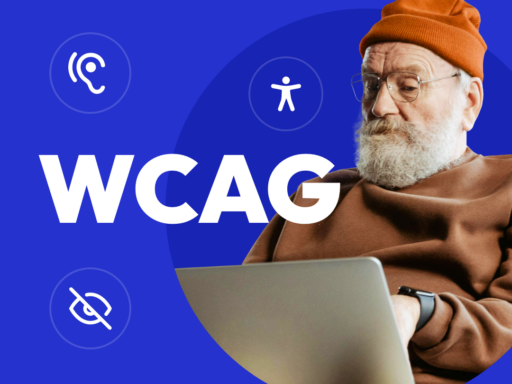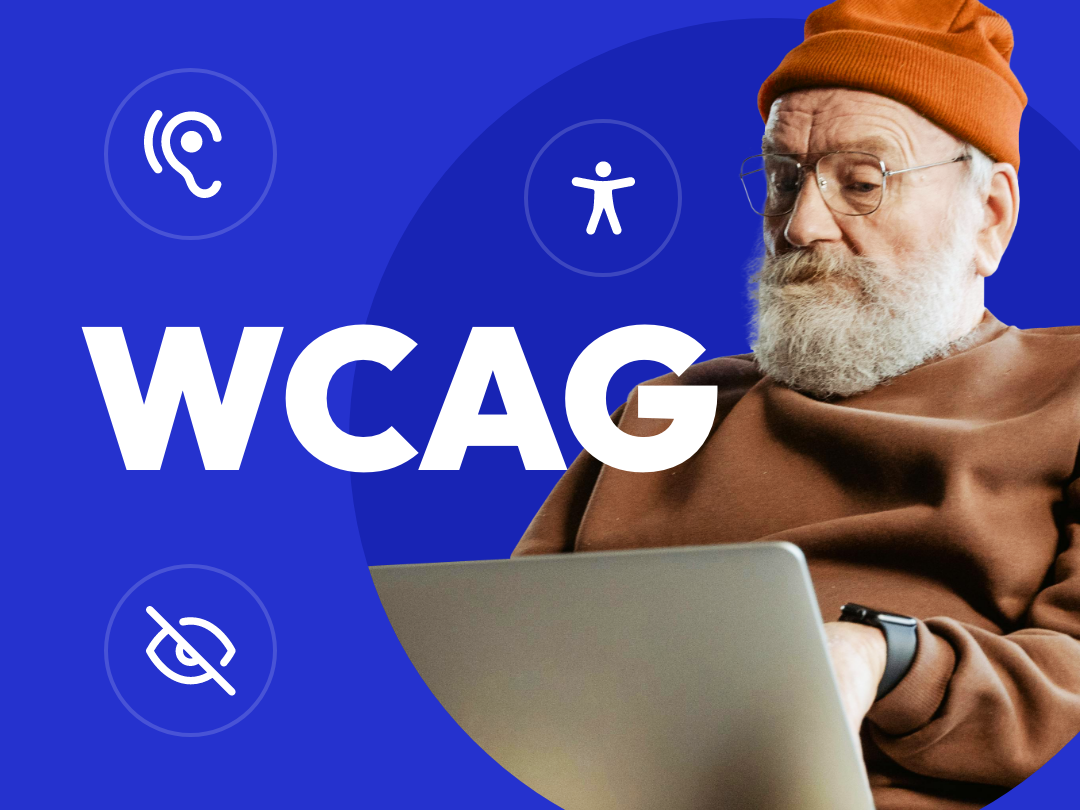The Web Content Accessibility Guidelines (WCAG) are an internationally recognized standard aimed at making digital content accessible to people with disabilities. Developed in collaboration with experts and organizations worldwide, WCAG provides a unified framework for accessibility, catering to the needs of individuals, businesses, and governments on a global scale.
But WCAG isn’t just for people with disabilities—it also benefits seniors and everyday users by enhancing the quality and usability of the web environment.
In our recent blog, Web Accessibility as the New Standard, we explored legislative changes that elevate accessibility to a new level. In this article, we’ll delve into WCAG’s core principles, which form the foundation of this standard, and explain why everyone, not just developers, should be familiar with them.
The 4 Principles of Accessibility
WCAG is built on four core pillars that expand access to online content. These principles ensure maximum inclusivity and usability, creating a barrier-free digital environment:
1. Perceivable
Web content must be designed to be processed by users through their senses. This includes providing text alternatives for multimedia to assist deaf users or enable screen readers for the visually impaired. Key aspects include contrast, structured headings, and user-friendly design.
2. Operable
All functionalities should be accessible without a mouse. Keyboard navigation or voice commands make interaction easier. Properly functioning interactive elements ensure predictable and seamless web experiences.
3. Understandable
Content should be clear and easy to comprehend. Simple language, multilingual options, and clear instructions for form completion make information accessible to everyone. Real-time feedback helps users avoid errors.
4. Robust
Compatibility with various technologies ensures access for a diverse range of users, including those using assistive devices. Functionality across platforms and browsers, combined with adherence to current standards, results in modern and flexible digital content.
The latest updates to WCAG address mobile content, motor limitations, and intuitive user interfaces, meeting the demands of a rapidly changing digital world.
WCAG Versions
WCAG evolves to keep pace with new technologies. Here’s a timeline of its key versions:
| Verzia | Zverejnené |
|---|---|
| WCAG 1.0 | May 5, 1999 |
| WCAG 2.0 | December 11, 2008 |
| WCAG 2.1 | June 5, 2018 |
| WCAG 2.2 | October 5, 2023 |
| WCAG 3.0 | In Progress |
Levels of Accessibility
Each WCAG version defines criteria divided into three levels: A, AA, and AAA. These levels represent the degree of accessibility, with each subsequent level building upon the previous one and introducing more stringent requirements to enhance web content accessibility:
Level A (Basic Level)
This level addresses the minimum requirements needed to meet the essential needs of users with disabilities. WCAG 2.2 defines 32 success criteria at this level, focusing on resolving critical accessibility barriers.
Examples:
- Non-text content (e.g., images) includes text alternatives. (1.1.1)
- The website is fully navigable using a keyboard. (2.1.1)
- Form fields have labels or instructions for proper completion. (3.3.2)
Level AA (Recommended Level)
Meeting Level AA significantly improves accessibility for people with disabilities and a wider range of users. This level adds 24 more criteria to the basic Level A requirements and is often considered the standard organizations should aim to achieve.
Examples:
- Contrast between text and background achieves a ratio of at least 4.5:1. (1.4.3)
- Content can be zoomed up to 200% without assistive technology. (1.4.4)
- Navigation order is consistent across all pages. (3.2.3)
Level AAA (Advanced Level)
This is the highest level of accessibility, encompassing criteria from both Levels A and AA, with an additional 31 rules. Achieving this level is highly demanding and not always practical, but every step toward meeting its requirements contributes significantly to inclusivity.
Examples:
- Contrast between text and background achieves a ratio of at least 7:1. (1.4.6)
- Pre-recorded videos include a sign language interpreter visible on the screen. (1.2.6)
By adhering to these levels, you can create a web environment that is accessible to a broader audience while meeting legal and regulatory requirements.
Legislation
Accessibility laws vary significantly across countries. For instance, the EU Web Accessibility Directive (2016) mandates that all public sector websites and applications in EU member states meet WCAG 2.1 Level AA standards. This directive ensures that public services are accessible to people with disabilities and sets a foundational standard for digital inclusivity.
Starting June 28, 2025, the European Accessibility Act (EAA) will extend these accessibility requirements to cover a wider range of digital products and services, including private sector platforms such as e-commerce websites, banking apps, and electronic communications. The act seeks to address barriers faced by people with disabilities and improve access to technology for 87 million individuals, including seniors and those with temporary impairments.
By adhering to WCAG and staying ahead of legislative requirements, organizations can not only comply with regulations but also demonstrate their commitment to creating an inclusive digital world that benefits everyone. This proactive approach fosters better user experiences and ensures accessibility remains a core value in digital development.
Sources:
https://www.w3.org/
https://www.wcag.com/
https://developer.mozilla.org/







